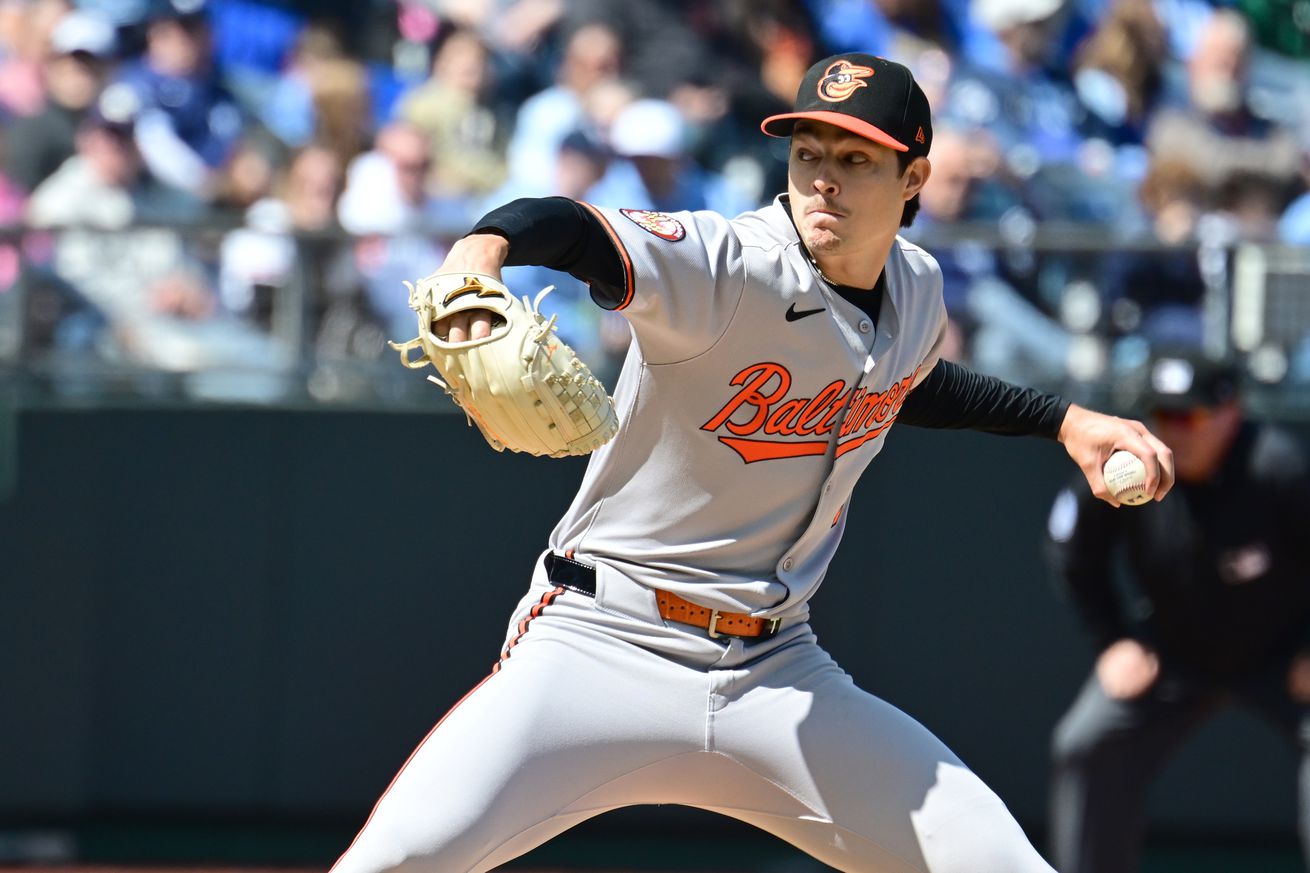
Baltimore’s rotation features several starters punching one level above their expected caliber. Can any of these starters exceed expectations before Grayson Rodriguez and Kyle Bradish return?
Zach Eflin deserves credit for providing stability to an otherwise unsteady Baltimore rotation. The 31-year-old has delivered three consecutive quality starts to begin the season, and his latest gem (6 IP, 4 H, 1 ER) propelled Baltimore to victory in the first of a three games set in Arizona.
Eflin demonstrated a masterclass effort of successfully pitching to contact. The righty only struck out one batter, did not issue a walk, and completed six innings with only 73 pitches. Unfortunately, the Orioles eventually revealed that Eflin left the game “early” with right shoulder fatigue.
The Orioles had yet to make any type of formal announcement regarding Eflin’s status at the time of this writing. Losing the de facto ace for any period would sting, but one thing remains true regardless of Eflin’s health. Brandon Hyde’s squad needs another starting pitcher to take a step forward.
The loss of Kyle Bradish and Grayson Rodriguez—not to mention the departure of Corbin Burnes—ensured that every member of the starting rotation would be pitching above his level. Few would make the case that Eflin qualifies as a legitimate ace. Charlie Morton and Dean Kremer likely fit better at the back of a rotation, and both Tomoyuki Sugano and Cade Povich qualify as unknowns at the major league level.
Rodriguez continues to work his way back to Baltimore, but Bradish will remain out for an extended period of time. Kyle Gibson will join Norfolk’s rotation soon for his version of extended spring training, but Chayce McDermott, Trevor Rogers, Albert Suárez and Tyler Wells all remain on the injured list.
So what about the guys already in Baltimore’s rotation? Each player has at least one reason to believe that they can step up in the short term when the Orioles need them most.
Charlie Morton is a guy that has done it time and time again throughout his 18-year career. Any big leaguer over the age of 40 brings a level of experience to a team, but everyone runs out of gas eventually. Morton struggled in his first two starts, but is there really cause for concern?
Morton averaged 93.8 MPH with his fastball in his first two starts after averaging 94.1 MPH last year. A 0.3 drop in two early spring starts hardly qualifies as a red flag. Morton’s 4.15 FIP was less than half of his inflated 9.72 ERA through two appearances.
Put simply. Morton knows how to pitch. He posted a 14-12 record and 3.64 two years ago at age 39, and he ranked as an average pitcher (99 ERA+) last season. The Orioles do not need Morton to pitch like an ace at age 41, but a few above-average starts would go a long way this spring.
This season marks Kremer’s sixth year starting games for the Orioles. Kremer’s best year came in 2022 when he finished 8-7 with a 3.23 ERA and 121 ERA+. He posted an impressive 13-5 record with a 4.12 ERA and 99 ERA+ in 2024, but the righty took a slight step back last season. Kremer finished 2024 with a 8-10 record, 4.10 ERA and 92 ERA+. However, he posted a 2.25 ERA over his final four starts.
Kremer isn’t the type of pitcher to blow batters away, but he remains capable of getting hot for a month or two. That being said, Sugano and Povich fit the bill as the two most likely pitchers to surprise everyone this season.
Sugano clearly felt the weight of his first big league start in Toronto. The 35-year-old rookie allowed a pair of runs and left with hand cramps after only four innings. He bounced back in a big way with 5.1 innings of one-run ball against Kansas City last week.
Sugano will go through a period of adjustments as MLB hitters face him for the first time. However, his deep pitch mix and pinpoint control provide a template for consistency. There’s a world where Sugano keeps hitters off balance every five days, and the Orioles would love for it to be this one.
Povich checks in as the youngest starter by a wide margin. The 24-year-old flashed potential last season, but it’s officially time for the lefty to prove he belongs in a big league rotation. Povich earned his spot in spring training, but he failed to piece it all together in his first two starts. Povich failed to complete the fifth inning in the home opener against the Red Sox, and he displayed a veteran-like presence to recover from a rough start in Kansas City the other day.
I tabbed Povich as the biggest story of the Spring, and the lefty represents the best chance of Baltimore developing a starting pitcher in this winning window. The Orioles aren’t asking Povich to lead the rotation any time soon, but even mid-rotation stuff from the youngster would provide this group a boost.